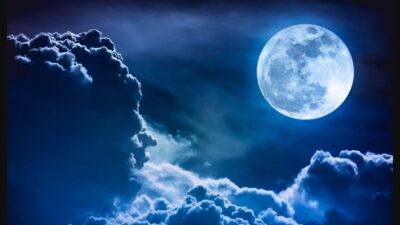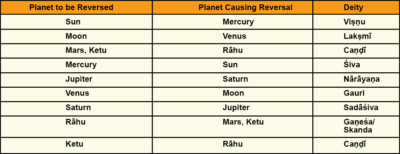Ārūḍha and Māyā
Definitions
 Ārūḍha means to mount, rise, bestride, like mounting a horse or to ascend, or elevate. In jyotiṣa terminology it is used to describe a secondary self (mounted selves or selves which bestride the original self) or image that is mounted or superimposed upon the real self. This superimposed self often exists in a parallel plane to the real self; but can become so real as to blur the distinction between the real and the projected, to the extent the native can forget his true self and imagine the projection to be the truth. These superimposed selves are multiple, depending upon the various aspects of our lives. So we can have multiple selves projected in different arenas of life, whereby our college friends, our families and colleagues can have different pictures of the same person. The real self is the Lagna and the superimposed self is the Ārūḍha Lagna. The multiple superimposed selves in the different arenas of life are the different ārūḍha padas. Hence, in the eastern Indian traditions, horoscopes are to be analyzed from the Lagna, Ārūḍha Lagna and the Ātmakāraka to get a complete and correct understanding of the chart.
Ārūḍha means to mount, rise, bestride, like mounting a horse or to ascend, or elevate. In jyotiṣa terminology it is used to describe a secondary self (mounted selves or selves which bestride the original self) or image that is mounted or superimposed upon the real self. This superimposed self often exists in a parallel plane to the real self; but can become so real as to blur the distinction between the real and the projected, to the extent the native can forget his true self and imagine the projection to be the truth. These superimposed selves are multiple, depending upon the various aspects of our lives. So we can have multiple selves projected in different arenas of life, whereby our college friends, our families and colleagues can have different pictures of the same person. The real self is the Lagna and the superimposed self is the Ārūḍha Lagna. The multiple superimposed selves in the different arenas of life are the different ārūḍha padas. Hence, in the eastern Indian traditions, horoscopes are to be analyzed from the Lagna, Ārūḍha Lagna and the Ātmakāraka to get a complete and correct understanding of the chart.
Human personalities, therefore, are a collage of real and created images, a mixture of that which is actual and illusionary, satya and māyā. Hence ārūḍhas are associated with māyā. The literal definition of māyā is that which is an illusion, deceit, supernatural tricks or sorcery, fraud, an apparition. The illusionary city of Lankā was built by the demon Maya at Rāvaṇa’s behest. The root of the term however, can be traced back to the Advaita teachings of the Upanishads, which holds the satya sanātana nirguṇa Brahmaṇ to be the only truth of the Universe, while the rest was held to be nothing but an illusion or māyā. This facet of the Paramātman, which manifests itself to create the vast and beautiful created universe, is known as its śakti, deified as the Great Goddess Mahāmāyā. It is therefore, not surprising, that the Moon, the planet representing the Divine Mother, is the karaka for Ārūḍha Lagna.
The Moon and the Ārūḍha
 Mother is the mind as represented by the Moon. The image that we have of the mother in our mind is a warm, secure home created by her. Hence the ārūḍha of the fourth house is the image that we have of our mother and home. If the ārūḍha is associated with the asura grahas Venus, Saturn and Mercury, a strong matrilineage is indicated. If the A4 is associated with the sura grahas Sun, Moon, Jupiter and Mars, then the patrilineage will be strong. If there is a doubt regarding a native’s lagna, then one way to check the chart is to ascertain the lineage through A4.
Mother is the mind as represented by the Moon. The image that we have of the mother in our mind is a warm, secure home created by her. Hence the ārūḍha of the fourth house is the image that we have of our mother and home. If the ārūḍha is associated with the asura grahas Venus, Saturn and Mercury, a strong matrilineage is indicated. If the A4 is associated with the sura grahas Sun, Moon, Jupiter and Mars, then the patrilineage will be strong. If there is a doubt regarding a native’s lagna, then one way to check the chart is to ascertain the lineage through A4.
Chart 1: Patrilineage


The ārūḍha pada of the 4th house is not conjunct any planets; so we take the lord Mars, a sura planet, conjoined exalted Moon and Mercury. The patrilineage dominates.
Chart 2: Matrilineage


In this case too, the A4 is not associated any planets. The lord of A4 is Venus, an asura planet, indicating the matrilineage to be very strong. This is an added tool to be looked into while examining parental lineage.
Reversing Images

The Moon does not have light of its own but basks in reflected light. In physics, the concept of the pin-hole camera illustrates how images are created by reflected light, whereby the reflected light forms a duplicate image by reversing the original. In a similar manner, images captured by our eyes are reversed in our brain. The Sun and the Moon give the light to see the image but Rāhu and Ketu in our brains reverse that image by turning it upside down. The qualitative aspect of these images is brought about by the nodes. Each event in our lives is stored in our brain in groups of images and emotions related to the event. These groups are twelve in number and are the twelve ārūḍha padas. To get to the satya of each event, one will have to reverse each image stored in the brain.
Parāśara and other astrologers use the concept of reversals in the context of spirituality. The first step in our quest of truth is the reversal of the images in our brain; to them around so that they right side up. Māyā is reversed by the following specific planets and the deities associated with them:

Chart 3: Sri Ramakrishna



In the chart of Sri Ramakrishna, Jupiter is in Ārūḍha Lagna. Saturn is his lagna lord exalted in the ninth house and he was born in śukla Dvitīyā. Thākur in his quest for complete sublimation into the Absolute Divine was seeking to annihilate his material and worldly identity. The planet which will reverse the Ārūḍha is Saturn, from the scheme given in the above table. It is a well known fact that he was an ardent worshipper of Kāli, in whom he had completely dissolved himself.
Chart 4: SJC Student

This chart belongs to an SJC student. Similar to Thākur, she has Jupiter as the lord of the Ārūḍha Lagna conjoined A7, belongs to a Saturn’s lagna and is born on śukla Dvitīyā. She was going through a terrible marriage where she was physically and verbally abused by her husband, who was also a sadomasochist. There are ample combinations in the chart to support this, into which we are not focusing at present. In the process she was reduced to a dithering heap, with her soul smothered and her confidence shattered. In order for her to take any steps to redress the situation, she had to be mentally strong to tackle the situation. The remedy that was prescribed for her was the reversal of her Ārūḍha. She too has lagna lord Saturn placed in Kumbha. She was advised the worship of Kāli, to whom she was deeply attracted. Kāli gave her the tremendous strength necessary to emerge from the nefarious situation, and she is now divorced and has found her second Upapada, Jupiter.
Forgotten Worship
If Saturn aspects an enemy graha in any ārūḍha, the native’s concerned relation will suffer, as it indicates that he has forgotten the worship of the concerned deity. If the Sun is in the A9 aspected by Saturn, the native’s father forgot to worship Viṣṇu. If this combination is also in the native’s father’s chart, then the grandfather would have forgotten the worship of Viṣṇu. If the aspect of Saturn is on multiple planets in an ārūḍha, then the planet with the highest degree should be chosen. Exaltations and debilitations of the planets are to be ignored in the ārūḍhas. In general, kṛṣṇa pakṣa indicates Śiva worship and śukla pakṣa indicates Viṣṇu worship and both Śiva and Viṣṇu worship each other.
Chart 5: Forgotten Vishnu Worship


In the given example, Saturn is conjoined A9 aspecting Sun in the seventh from it. The native’s father is a blind worshipper of Śiva and does not recognize any other deity. He is particularly biased against Viṣṇu. Even when he visits the Jagannath Temple in Puri, he addresses the lord with a loud and sonorous Om Namah Śivāya much to the chagrin of the temple priests and the bemusement of the gathered devotees.
Ārūḍha Padas from Candra Lagna
As Moon is the kāraka for Ārūḍha lagna, one needs to examine where the various ārūḍha padas are placed from the Moon, to determine the manifestation of these ārūḍhas in a native’s life. If the ārūḍhas are well placed from the Moon, the ārūḍhas will prosper. If they are badly placed, like in the 8th and the 12th house, the ārūḍhas will suffer. The worst ārūḍhas are those in the 12th from the Moon. When placed in the 8th from the Moon, the native will suffer immensely and eventually die without Śiva kṛpā. In any case, these ārūḍhas placed in the 12th and the 8th from the Moon will get destroyed and can only be saved by the grace of Jupiter. The native will experience separation with the people represented by these ārūḍhas and they will above all indicate the problem areas of the chart. The functional enemies of the Moon, if placed in these ārūḍhas or lord of these ārūḍhas will adversely affect the situation.
Chart 6: Aishwarya Rai


 The above chart is that of a leading film actor of Indian cinema and ex-Ms. World. Extremely beautiful and endowed with supreme star qualities, she has A7 and A5 placed in the 12th from the Moon.
The above chart is that of a leading film actor of Indian cinema and ex-Ms. World. Extremely beautiful and endowed with supreme star qualities, she has A7 and A5 placed in the 12th from the Moon.
Her ethereal beauty had a long queue of men at her doorsteps, and charmed by these attentions, she enjoyed the company of many of them. However, these series of much publicised affairs and relationships did not culminate in matrimony or happiness, and she underwent a lot of suffering in her relationships. In one of the relationships with a leading actor she suffered severe physical abuse, which was once again much publicised and there were photographs of her with bruises on her face splashed across newspapers and magazines.
Chart 7: Problems with Property


The lady whose horoscope is displayed above has A4 and A10 in the eighth from her Moon. The A4 represents mother, the world of the mother, which is her home. She has decided to give up her share of ancestral property to her brother, with whom she and her parents have been having a lot of problems. She decided that giving up her share of property would bring peace in the household. The A4 is not only in the 8th from the Moon, and hence destroyed but in the 8th house of the rāśi chart, which is the house of inheritance.

0 comments